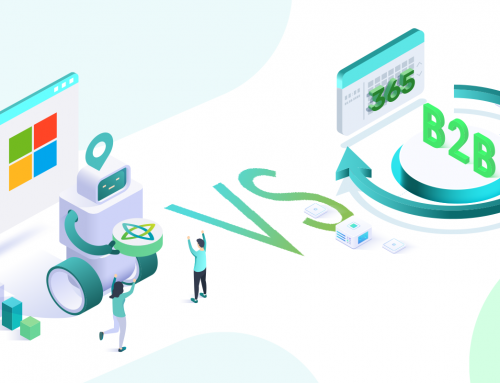Changing B2B eCommerce platform; how to successfully avoid these common problems
Regardless of how much time and effort you put into finding the best eCommerce solution, sometimes that eCommerce platform just doesn’t fulfill your expectations or your client’s expectations. Changing a B2B eCommerce platform then becomes the only right solution that could save you from further complications, problems, and costs.
But, this process sometimes includes certain problems and one of the most common ones is transferring client and transaction data. Still, with the appropriate B2B eCommerce platform, it is possible to very simply avoid them.
#1 Changing a B2B eCommerce platform and scaling
Scalability, i.e. the ability of a company to grow and not be hindered by its structure and available resources when faced with increased demand, can become a problem for companies that decide to change their B2B eCommerce platform.
Namely, a B2B webshop that operates successfully with a smaller number of orders often faces unexpectedly worse results once the number of online buyers increases. Although it sounds quite incredible that a higher number of buyers can be a problem for any business, certain eCommerce platforms can have problems with an inrush of buyers.
That is exactly why, when choosing the right eCommerce solution for your business, you should definitely keep in mind that this is a system that supports all types of businesses, regardless of the amount of turnover and income.

#2 Data transfer and implementing a new B2B eCommerce solution
One of the most common reasons that B2B companies postpone changing a B2B platform are complications regarding data transfer and implementing a new B2B eCommerce solution. Despite popular opinion, this process doesn’t have to be demanding nor complicated.
An integrated B2B system enables establishing a real-time connection between a B2B webshop and an ERP system like Microsoft Dynamics NAV/Microsoft Dynamics 365 Business Central. Microsoft Dynamics is also integrated with other Microsoft tools – Outlook, Office 365, SharePoint, CRM, Power BI, etc. That is exactly why integration between a B2B eCommerce and the ERP system enables you to manage all this data from one place. The production process, inventory information, storage, and delivery or client communication; all this becomes much simpler. The results are simple implementation, lower maintenance costs, updated real-time information on the inventory condition, satisfied clients, and maximum time savings.
Therefore, with the help of an integrated B2B eCommerce, your ERP system becomes an engine of successful online sales and buyers are enabled to create orders based on direct data from the inventory. That way, they have access to accurate and updated information on product availability and a clear insight into all previous orders, including bids, open and closed orders.

#3 Optimization of B2B eCommerce for mobile devices
Research from 2019 has shown that people spend on average 3 hours and 15 minutes using their mobile phones daily. A fifth of them spends up to 5 hours with a mobile phone in their hands every day. The fact that about 60% of them said that they surely wouldn’t recommend a company that has a poor mobile version of their website, is especially interesting.
So, your B2B webshop should be available for buyers on all mobile devices. If a mobile version of the webshop doesn’t provide a quality shopping experience, the buyer will surely, in time, check what the competitors have to offer.
Therefore, if you want to avoid causing subsequent problems by changing of a B2B eCommerce platform, be sure to check whether the new system functions equally well in desktop and in the mobile version.

#4 Changing the B2B eCommerce platform and costs
Different B2B eCommerce systems come with different prices. Your goal should be a B2B eCommerce solution where you will have a clear overview of expected costs from the beginning. Also, don’t forget that a lower initial cost sometimes implies higher maintenance costs in the long-term, regarding money but also necessary resources.
Your internal resources also cost, and how much of them you will be using depends on the B2B eCommerce platform you choose for your online sales. With an integrated B2B eCommerce system, your B2B webshop becomes a self-service platform that automates sales and guarantees the client a unique shopping experience.
Such solutions help buyers to quickly and simply find wanted articles with the help of available search filters, already defined in the Microsoft Dynamics NAV system. This way, you are guiding a B2B buyer towards a product which fulfills his needs and expectations.

Changing a B2B eCommerce platform as a safe way to an excellent user experience
Besides helping the change of a B2B eCommerce platform to really run smoothly without all the complications and problems you’ve been hearing about so far, an integrated B2B eCommerce system will quickly and efficiently expand your sales with fewer costs. Also, these solutions turn a B2B webshop into a user-friendly self-service platform that will motivate buyers to collaborate with you as a reliable partner.
You are looking for a quality eCommerce platform that could help you in doing just that? Contact us today to be presented with the best solutions for satisfied online buyers and a successful webshop.




